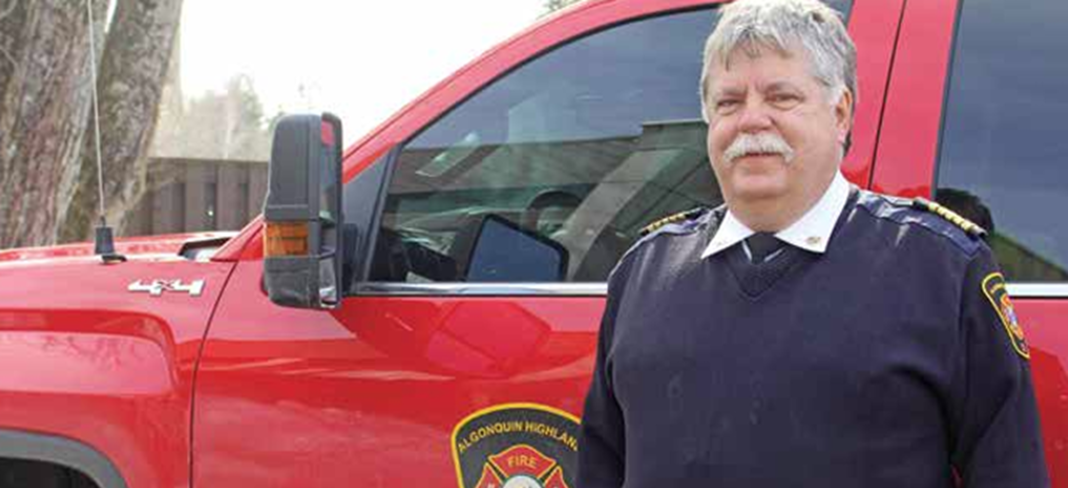County fire coordinator Michael French says a decision last year by the four townships – to put no daytime burning rules into effect – “was a really progressive move” that has led to fewer blazes and a reduced need for fire bans.
Daytime burning is not allowed from 7 a.m. to 7 p.m. between April 1 and Oct. 31.
Speaking on behalf of Algonquin Highlands, French said, “we haven’t been busy at all. We’re way down in calls. We’re probably down 30 per cent.”
For the most part, the chief added the public is respecting the new regulations.
One anomaly was a July 13 fire on Beech Lake in which someone used a burn barrel during the day, with flames spreading into nearby trees. However, French said the person was in violation of the rules “so appropriate action was taken.”
People breaking the regulations can be held responsible for damage to property or people; be liable for the cost of firefighting equipment and personnel; and for any costs or expenses owed by the municipality to the Ministry of Natural Resources (MNR) for controlling or extinguishing a fire.
Otherwise, French said, “we haven’t had any issues. We have been fortunate they are following the rules in the four townships. There is zero tolerance; they will be held accountable if they are burning outside the burn bylaw.”
There have been no fire bans in the County this summer despite some hot temperatures.
“Nobody’s burning in the daytime which really limits the opportunity for bush and wildfires so it was a really progressive move on the four townships’ part, and everybody’s respecting it, so that’s very important,” French said.
The County chief said the MNR monitors conditions and updates the townships. He added they are measured at the Stanhope headquarters “so nice and close to the region.”
Once they get the conditions’ statement, the four fire chiefs and CAOs discuss whether a ban is needed, and, so far, none have been required.
Minden Hills chief Don Kruger said his department hasn’t been particularly busy this year, noting they “have not had much in the way of grass/bush fires since April,” despite the region’s fire danger rating consistently reading mid-to-high.
Chris Baughman, chief in Highlands East, said he’s had minimal calls for grass and bush fires – a welcome reprieve after a busy few years. “We are encouraging people to continue to use caution and safe burning practices [when permitted], as they should be regardless of the conditions.”
At a July 22 council meeting, Dysart chief Dan Chumbley said his department has seen an uptick in calls this year, responding to 25 per cent more incidents through the first six months of 2025 – 247 compared to 205 last year. He said firefighters responded to three grass fires and a structure fire in June.
Alison Lake, a fire information officer with the MNR, said the fire hazard value for the Haliburton Highlands is currently “moderate,” apart from one area near Kawartha Highlands Provincial Park with a high value.
French added one of the important things about having the no daytime burning is “it gives more leniency because with people not burning in the daytime, we don’t have to be as aggressive putting a fire ban on because in the evening, there is less wind and more humidity, less chance of fire spread.
“It’s been a really quiet year and hopefully it continues.”
Tips for home and cottage
French encourages residents to continue to respect the burn bylaw, have working smoke alarms in their homes, and if they are going to burn after 7 p.m. make sure the fire is out when they are done. He also recommends a garden hose or bucket of water nearby.
He added cottagers and homeowners should check out firesmartcanada. ca tips on how best to protect their building from the potential of fire spreading, such as cleaning out eavestroughs, sweeping pine needles off rooves, and keeping foliage away from structures.
Lake said there are quite a few things home and cottage owners can do to reduce the risk of wildland fires. She said people can call 911 when they see a fire, or smoke, and note the location, colour of smoke, and size of the fire or area burning.
She suggested that when doing yard work, people dispose of yard waste and woody debris by composting or at a local landfill.
She said there is a full set of outdoor burning regulations on their website at ontario.ca/outdoorburning





